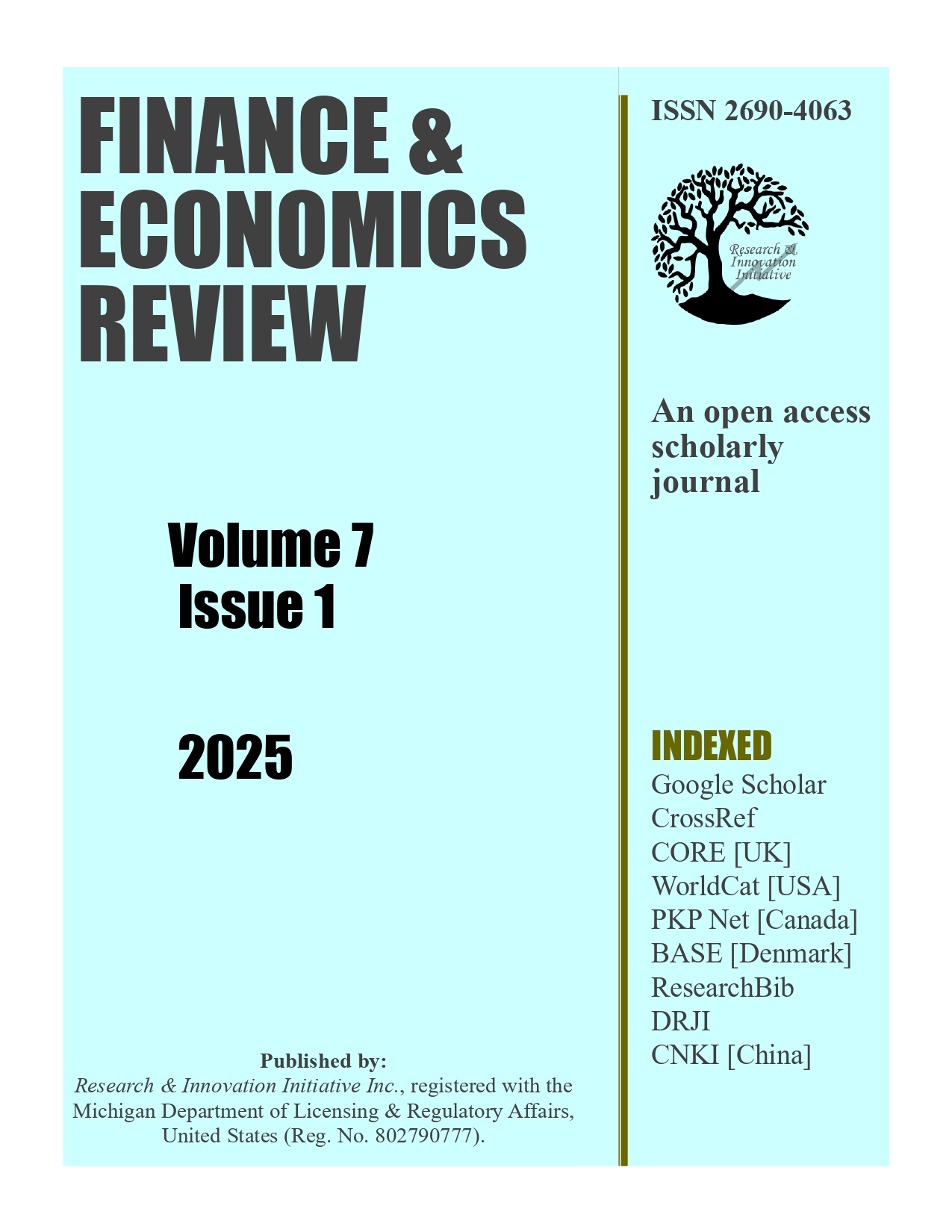Post-COVID-19 Inflation Dynamics in Bangladesh
DOI:
https://doi.org/10.38157/fer.v7i1.667Keywords:
Inflation, ARDL, Supply-side impact, Post-COVID-19, BangladeshAbstract
Purpose: Bangladesh's economy has recently experienced elevated inflationary pressures, which significantly affect economic stability and growth. This study analyzes the factors driving inflation in Bangladesh and determines whether supply-side factors or demand-side pressures primarily influence it.
Methods: The ARDL approach is used in this study's estimating process to use monthly secondary data from January 2015 to September 2024, available from different sources like Bangladesh Bank (BB) and Bangladesh Bureau of Statistics (BBS). This study utilized three separate models for scenario analysis to determine whether inflation dynamics are the same for the pre-COVID and post-COVID periods or over the entire period and whether supply-side or demand-side phenomena drive inflation. The rate of inflation is the dependent variable in the model; industrial production, import, inward remittance, exchange rate, and central bank policy rates (repo, reverse repo) are our independent variables, and the broad money supply is included as a control variable. A correlation matrix is also used to observe the connection among the variables.
Results: This study's findings reveal a long-run relationship among industrial production, lag value of inflation, import, lag values of exchange rate, and broad money supply, but the central bank policy rates have no statistical significance for Bangladesh. This revealed that the channels through which monetary policy influences inflation may be weak or ineffective, or inflation may be driven more by supply-side factors than demand-side ones, reducing the effectiveness of monetary policy.
Implications: The finding informs policymakers or experts that the recent inflationary trend is a supply-side phenomenon and will be adjusted over time.
Originality: This study offers a story contribution by systematically analyzing the post-COVID-19 inflation dynamics in Bangladesh, distinguishing between supply-side and demand-side drivers. Unlike previous studies, which primarily focus on pre-pandemic inflation trends or general macroeconomic conditions, this paper examines explicitly the structural shifts in inflationary pressures caused by the pandemic’s aftermath.
Limitations: Inflation is a multivariate variable, and while fiscal deficits may directly influence inflation, their data are only available annually. Therefore, we cannot include this variable in our article.
Downloads
Published
Issue
Section
License
Copyright (c) 2025 Imam Abu Sayed, Ripon Roy, Rifat Ara Bindu, Romana Ferdoush

This work is licensed under a Creative Commons Attribution-NonCommercial-NoDerivatives 4.0 International License.


